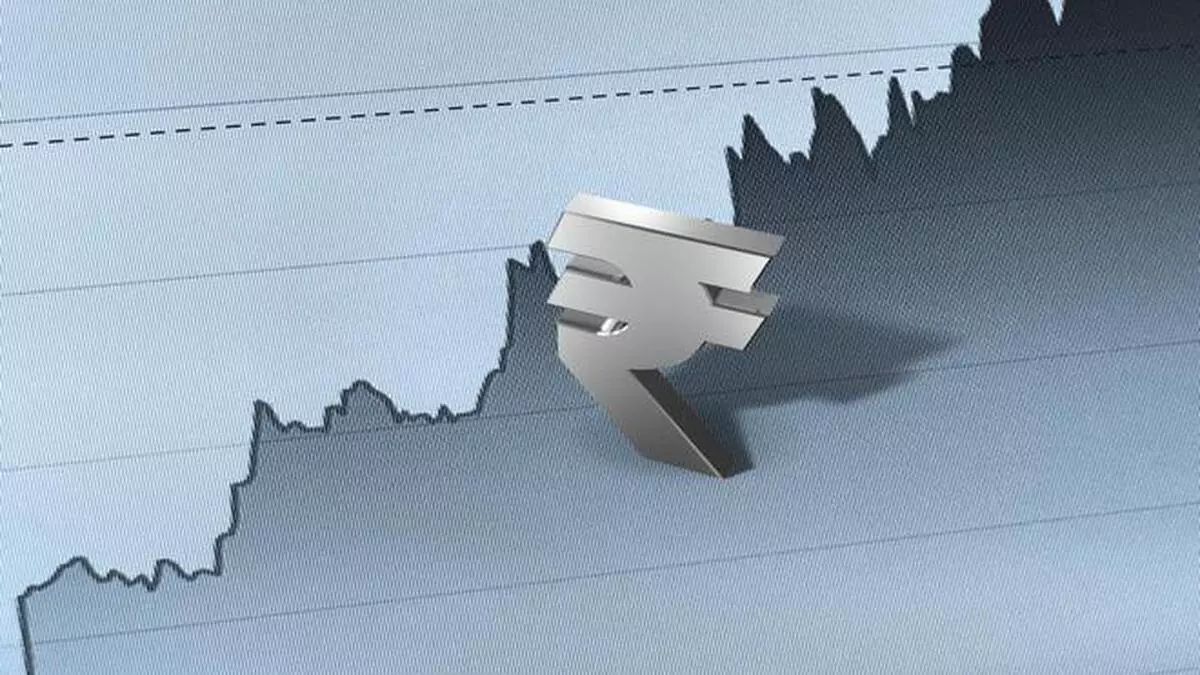Rupee Hits 10-Month Low Against Dollar Amid Crude Oil Price Surge: Indian Economy Faces Testing Times
Rupee along with global stocks face pressure due to a sudden crude oil price surge caused by Saudi Arabia and Russia extending production cuts until December.

Rupee Hits 10-Month Low Against Dollar Amid Crude Oil Price Surge: Indian Economy Faces Testing Times
As a result of a rapid increase in crude oil prices, the Indian rupee plunged to its lowest point in more than ten months, reaching 83.15 versus the US dollar. An unexpected action by oil tycoons Saudi Arabia as well as Russia, who extended their production restrictions until December and tightened oil supply for the following four months, caused the oil price to surge. Market estimates of a reduction just through October have been exceeded by this extension.
Rupee’s Plunge Amid Global Turmoil
The Indian rupee had been trading at 83.15 to the dollar at 1:27 PM on September 6, down 0.13 percent from the previous trading session’s close of 83.04. The rupee depreciated to 83.18, the lowest level since October 20, 2022, after starting the day at 83.02. Analysts have expressed concern that if oil prices keep on increasing, India, a big oil importer, may see an upsurge in its deficit in the current account.
In response to the Reserve Bank of India’s (RBI) initiatives, Anil Kumar Bhansali, Head of Treasury as well as Executive Director of Finrex Treasury Advisors LLP, underlined the importance of continuously monitoring the value of the Indian rupee. In earlier times, the RBI had verbally warned lenders about taking arbitrage positions in the Non-Deliverable Forward (NDF) market, Bhansali pointed out. Market participants have taken on a “wait and watch” strategy in the current climate prior to arriving at any substantial decisions about their positions.

Global Ramifications
This increase in oil prices had an effect outside of India. On September 6, Asian currencies were trading down, with the Indonesian rupiah dropping 0.23 percent, the Malaysian ringgit losing 0.22 percent, the Philippines peso losing 0.12 percent, as well as China offshore also losing 0.12 percent. The Japanese yen, meanwhile, went against the pattern by increasing by 0.13 percent. On safe-haven buying, the US dollar held close to a six-month high as risk appetite was dampened by worries about China and the state of the world economy. The dollar index, which gauges the strength of the dollar versus other major currencies, was down 0.1 percent compared to the previous closing of 104.81 to 104.71.
Factors Contributing to Rupee’s Weakness
The Director of Kedia Advisory, Ajay Kedia, emphasized a number of issues that are weakening the Indian rupee. Pre-election periods have historically seen a decline in the USD/INR exchange rate, which raises the possibility of a short-term devaluation. The rupee is also suffering from increased crude oil costs, which are currently close to $90 per barrel. Furthermore, additional pressure is being added by the recent rise in the US dollar, which is being fueled by a lackluster risk mood and rising US Treasury yields.
Kedia thinks the rupee is still weak despite encouraging domestic macroeconomic statistics; it recently fell below 83 against the US dollar, forcing the Reserve Bank of India (RBI) to intervene. Poor risk appetite as well as weaker Asian market performance are adding to the rupee’s problems, according to Kedia, who forecasted that the currency may hit levels between 83.60 and 83.70 in September.
Oil Prices Ease Slightly
The price of crude oil dipped marginally from its highest point since November 2022 as worries about a supply bottleneck grew. While US West Texas Intermediate crude (WTI) futures lost 0.70% to $86.08 per barrel, Brent crude futures dropped 0.74% to $89.37 per barrel. The rupee was also hampered by domestic equity market weakness and selling by foreign institutional investors (FIIs). In accordance with data on exchanges, FIIs sold Indian shares worth over 20,600 crores in August in addition to having continued to be net sellers in the cash segment to the tune of more than 4,600 crore to this point in September.
The direction of the rupee’s future remains unpredictable as market participants closely monitor changes in the world’s oil markets, moves made by central banks, as well as geopolitical developments that could have an even greater impact on currency movements.

Navigating the Storm – Challenges and Opportunities for the Indian Economy
The recent plunge in the value of the Indian rupee versus the US dollar to a 10-month low serves as a sharp reminder of the interdependence of the world’s economies and the susceptibility of emerging markets to outside shocks. It is crucial to assess the potential consequences and look into resilience options as the Indian economy struggles to deal with this difficult situation.
Oil Price Conundrum- India, a country that depends significantly on oil imports, has been hit by the spike in crude oil prices brought on by unanticipated production cuts in Saudi Arabia and Russia. The country’s current account deficit is strained by rising oil prices, which also exacerbate inflationary pressures. A two-pronged strategy is required to address this situation: increasing energy efficiency and diversifying energy sources. Combining conservation efforts with investments in renewable energy can assist to lessen the negative effects of oil price volatility.
Headwinds in the world economy- India is hardly the only country dealing with economic turmoil. The world economy is navigating uncertainty, ranging from concerns over China’s economic development to the effects of sustained rate increases by the US Federal Reserve. Prudent monetary and fiscal policies are required in light of these difficulties. There is no way to overestimate the importance of the Reserve Bank of India in preserving stability. Finding a delicate balance between reining in inflation and promoting economic growth requires forethought and nimbleness.
Currency Conundrum: There are pros and cons to the rupee’s decline. Although it presents difficulties with regard to inflation as well as the servicing of foreign debt, it gives export-oriented companies a competitive advantage. By promoting vital industries like manufacturing and technology, promoting exports, and fostering a favorable business environment, the government must seize this opportunity.
Institutional Foreign Investments: The concern over the departure of foreign institutional investments stems from the general risk-off attitude among investors worldwide. India should concentrate on structural reforms, streamlining regulatory procedures, as well as improving ease of doing business in order to regain confidence. An environment for investing that is open and reliable can draw in international money.
Diversification and Resilience: The ability of India’s economy to withstand shocks depends on its sectoral as well as market diversification. The nation can become less vulnerable to changes in the global economy through promoting entrepreneurship, supporting domestic manufacturing, and boosting rural economies.
The Common Citizen’s Function: The stability of a country’s economy is not entirely up to officials. Every citizen has a part to play in promoting fiscal responsibility, lowering energy use, as well as fostering entrepreneurship to promote economic growth.
In terms of conclusion, the difficulties raised by the recent depreciation of the rupee are significant, but they also offer chances for development, innovation, as well as long-term economic resilience. The Indian economy has previously survived crises and come out stronger and more resilient. In order to navigate such turbulent waters and guide the country toward prosperity, it is imperative for all stakeholders – the government, corporations, as well as citizens – to work together.





